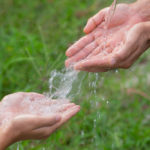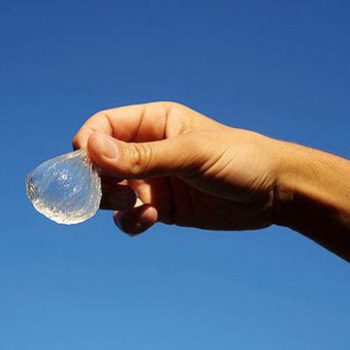|
|
Unbeknownst to many, the world beneath our feet is teeming with life, providing a bustling ecosystem where worms play a crucial role. These slimy creatures that we often overlook or recoil from serve as nature’s recyclers, converting organic matter into nutrient-rich soil.
As we delve deeper into the existence of worms, one question arises: what do these tiny custodians of the earth eat?
The diet of worms is an intriguing topic, mostly due to their vital role in soil fertility. Consuming organic matter and breaking it down into smaller pieces allows worms to contribute to the soil’s health and productivity. Their menu ranges from decomposed vegetation and dead roots to bacteria and fungi — a culinary spread that may not seem appealing to us but is indeed a buffet for our subterranean friends.
This article explores worms’ eating habits, nutritional needs, and their profound influence on our planet’s ecosystems. So if you’ve ever wondered what these little wrigglers consume or how they impact our environment, read on to unearth their fascinating world!
Key Takeaways
- Worms are essential recyclers, converting organic waste into nutrient-rich soil.
- Their diet comprises decomposed plants, dead roots, bacteria, and fungi.
- Certain worm species excel in recycling abilities and composting.
- Feeding worms involves providing a variety of organic waste while avoiding harmful substances.
- Optimal worm bin conditions require monitoring for proper moisture and pH levels.
Worms: Nature’s Recyclers
Worms are, without a doubt, nature’s recycling champions. They tirelessly work beneath the surface, quietly and efficiently converting organic waste into nutrient-dense soil. This humble creature’s tireless work ensures that our ecosystem thrives, making them indispensable in maintaining environmental balance.
Earthworms, in particular, are known for their proficient recycling abilities. As they burrow through the soil, they consume decomposed organic matter. The material is then processed within their bodies and excreted as rich humus. This substance greatly enhances the fertility of the surrounding soil, facilitating healthy plant growth and promoting a vibrant ecosystem.
What Earthworms Are the Most Common?
Earthworms are a diverse group of organisms, with over 7,000 known species worldwide. However, a few types tend to be more common in gardens and soils around the world.
Firstly, there’s the Lumbricus terrestris, or the common earthworm, also known as the nightcrawler. This species is most active at night and can burrow deep into the soil, which contributes significantly to soil aeration and nutrient distribution.
Another widespread species is Eisenia fetida, commonly referred to as red worms or compost worms. They are smaller than nightcrawlers and prefer to live near the soil surface in decaying organic matter. They are renowned for their ability to break down organic material quickly, making them ideal for composting.
The Aporrectodea caliginosa, or gray worm, is another species frequently found in gardens and agricultural land. These worms play an essential role in breaking down organic matter and enhancing soil fertility.
Lastly, there’s the Allolobophora chlorotica, often called the green worm due to its distinctive color. This species typically lives close to the surface and feeds on decaying plant material.
Worm Diet: A Closer Look
Worms have an incredible ability to consume a wide array of organic matter, making them nature’s perfect composting machine. While their diet primarily consists of decomposed plant material, they also consume small particles of soil that contain essential nutrients and minerals.
As worms wiggle through the earth, they ingest the soil and organic matter in their path. This mixture is then broken down in their gizzard, a specialized organ for grinding food. The tiny fragments are further processed in their digestive tract, where enzymes and bacteria aid in nutrient absorption.
Contrary to our personal preferences, worms thrive on a diet rich in decay. They are particularly attracted to compost piles or areas with heavy leaf litter. Here, they find a buffet of decomposing organic matter — a veritable feast in the world of worms.
While worms do not have teeth, they do have strong muscular mouths that pull in this decaying matter. The food then travels through their long body and is broken down into smaller parts by the gizzard mentioned above.
What Can You Feed the Worms?
Feeding your worms properly ensures they remain healthy and productive, especially if you’re using them for composting in your garden. Worms thrive on a diet of organic waste, but there are some specifics to keep in mind.
Your worms will enjoy vegetable scraps such as carrot peels, cucumber ends, lettuce leaves, and tomato trimmings. They also consume fruit waste like apple cores, banana peels, and watermelon rinds. Avoid citrus fruits or anything highly acidic, as it can harm the worms.
In addition to fruit and vegetable scraps, worms can also consume coffee grounds and filters, tea bags (minus the staple), crushed eggshells, and plain cereals or grains. They are also partial to decaying leaves or grass clippings.
Do not feed your worms meat, dairy products, grass, oily foods, or heavily processed foods, as these can attract pests and create unpleasant odors. It’s also important to avoid feeding them anything toxic, such as plants treated with pesticides.
Providing a diverse mix of appropriate food will allow your worms to thrive and continue their essential role in recycling organic matter into nutrient-rich compost.
How to Feed Your Worms?
Feeding worms might seem straightforward, but there’s a process that ensures your wriggly friends remain healthy and productive.
Here are some steps to guide you through it.
- Preparation. Before you add any food scraps, ensure they’re cut into small pieces. The smaller the pieces, the faster your worms can break them down. It’s also beneficial to let these scraps sit out for a few days to start decomposing before feeding them to your worms.
- Placement. Once prepared, bury the food beneath the bedding in your worm bin. This method not only reduces odors but also prevents attracting unwanted pests like flies or rodents.
- Quantity. Be mindful of how much you feed your worms; overfeeding can lead to problems. Start with small amounts and monitor their consumption rate. If the previous food is gone within a week, then it’s safe to add more.
- Variety. Provide a variety of food scraps for a balanced diet. Worms appreciate a mix of fruit and vegetable peels, coffee grounds, tea bags, and crushed eggshells for grit to aid digestion.
- Monitoring. Keep an eye on the worm bin conditions. The optimal environment should be moist, like a wrung-out sponge, and have a pH level close to neutral.
Final Thoughts
Worms play an essential role in our ecosystems by recycling organic matter into nutrient-rich soil. Their diverse diet, largely composed of decomposed organic materials, facilitates their invaluable contribution to soil fertility and environmental health.
Properly feeding worms, particularly in composting scenarios, involves providing a variety of organic waste, including vegetable scraps and non-acidic fruit waste, while avoiding meat, dairy, and processed foods.
The world of worms is fascinating and complex, echoing their significant role in maintaining our planet’s balance and providing a compelling insight into the life beneath our feet.












